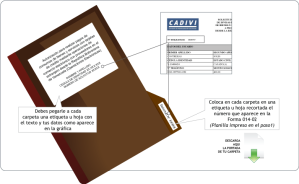Singin' the carpeta blues
 (A personal experience with SICAD, from a loyal reader who wishes to remain anonymous)
(A personal experience with SICAD, from a loyal reader who wishes to remain anonymous)
The company I work for imports technology services for primary economic activities. The products we import are not produced locally, and the production of some basic food staples depends on us (and two or three competitors) bringing in these products. Without going into too much detail, let’s just say that if you enjoy things like lettuce, spinach, sugar, corn or milk, you probably care about how many dollars my company receives.
The period going from October to March was tough on us. CADIVI was not an option – delays were massive, incapable of keeping up with the rythm we need currency at. The alternate mechanism called SITME was a life saver, but the problem was that using SITME meant you couldn’t use CADIVI and vice versa, since both mechanisms were mutually exclusive. Therefore, you need shadow companies – one for each mechanism – and it’s the same with the new SICAD. This complicates things tremendously.
As you can imagine by now, the idea of “strategic planning” in Venezuela today is science fiction.
After it was announced that SITME would shut down, we didn’t know what to expect. March came upon us, and with it the death of the President and the circus that followed. The first SICAD is announced on Easter break, in the midst of a presidential campaign, and nobody understood the rules. The pre-requisites were strange, and there was simply no information. It was, some would say, chavista-Freudian fixation on bureacracy at its apex.
So there we were, dealing with the numerous obstacles to get dollars in this country.
First obstacle is the money. In order to get dollars through SICAD, you had to have three times the amount you wanted to import for: one, as an advance to the provider; two, as collateral to the bank issuing the letter of credit that handled risk; and three, the bolívares needed to purchase your dollars.
The second obstacle was the registry. There was a squalid web page called “Rusicad” with very little information where you couldn’t write down any number, no, it needed to be in multiples of one thousand. Therefore, you were forced to negotiate with the provider to round out your figures.
Worst of all, you could only place a single tariff code per request, and you could only make a single request. Add to that the fulana carpeta, the folder you needed to put together as backup for your request – which includes everything from a cost estimate from your provider as well as all other supporting documentation – and you have your basic nightmare here.
Putting all of this together in two days during Easter break was always going to be uphill. Putting the money together was tougher still. But dealing with the bureaucracy of introducing your carpeta … well, that’s just impossible.
So there I was, with my carpeta in my hand, standing in line during Easter break, watching as one after the other was rejected – there’s a stamp missing, there’s a copy missing, your money is not all there – while we all whispered to each other “you put down how much?! So much! So little!”
Finally, I hand over my carpeta, and everything is ok thanks to a helping hand from the bank manager.
Days later, I learn from said manager that we were rejected. He tells us about other companies that got their dollars approved, thanks to their red, very red connections.
Today I learn that at least one of those approved companies with the red, very red connections … has not received a single dollar for their troubles.
I will be sending you my thoughts on the new SICAD, but it can’t be worse than what we had before.
Caracas Chronicles is 100% reader-supported.
We’ve been able to hang on for 22 years in one of the craziest media landscapes in the world. We’ve seen different media outlets in Venezuela (and abroad) closing shop, something we’re looking to avoid at all costs. Your collaboration goes a long way in helping us weather the storm.
Donate




